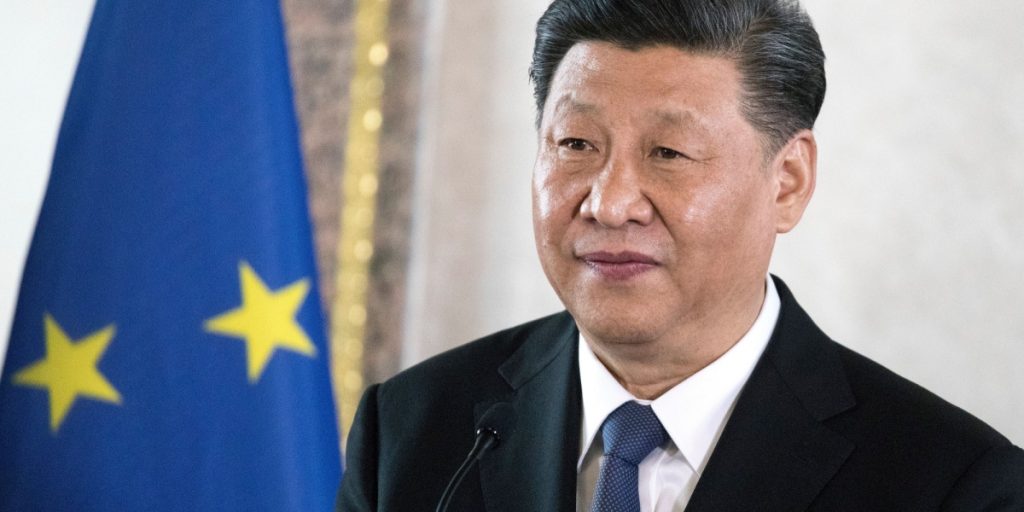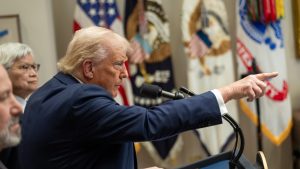China Cautious After U.S. Hits Imports with New Tariffs
Others are reading now
Trade tensions between the United States and China have flared up once again.
President Donald Trump has followed through on his campaign promise, imposing new tariffs on Chinese imports.
The 10% tariff on all Chinese goods entering the U.S. is part of broader trade measures also affecting Mexico and Canada.
Now, China faces a tough decision on how to respond.
Also read
Chinese officials were caught off guard by the announcement, as it came during a national holiday.
They have vowed to challenge the decision at the World Trade Organization and take necessary countermeasures.
However, they have not specified what those measures will be. The Chinese Ministry of Commerce called the tariffs a serious violation of WTO rules, reports Digi24.
They also stated that China will defend its rights firmly.
So far, China’s response has been more reserved compared to Mexico and Canada, which quickly announced retaliatory tariffs.
The new U.S. tariffs on Chinese goods are lower than those on Mexico and Canada, where tariffs have been set at 25%.
Unlike China, these two countries previously had nearly tariff-free trade with the U.S.
China’s approach may be influenced by recent diplomatic developments. Relations between Beijing and Washington have been warmer since Trump’s second term began.
Chinese leader Xi Jinping and Trump had a positive phone call before the U.S. president took office.
A high-ranking Chinese official even attended Trump’s inauguration. Trump has also suggested that he wants to negotiate with Beijing, especially on issues like the war in Ukraine.
These factors might be encouraging China to hold back on escalation.
The 10% tariff is lower than the extreme measures Trump once suggested. During his campaign, he floated the idea of imposing tariffs of over 60% on Chinese imports.
Instead of immediately escalating the trade war, China may be waiting for the results of a broader U.S. review of trade relations, expected on April 1.
Some analysts believe Trump could use the findings to justify further tariffs, testing China’s willingness to negotiate.
Meanwhile, China has been working to reduce its dependence on U.S. trade. Last year, Chinese exports to the U.S. accounted for only 3% of its GDP and less than 15% of total exports.
Chinese companies have also started shifting trade to other countries. The Chinese government has been strengthening economic ties with different global partners, reducing its reliance on the American market.
Despite the tariffs, Chinese officials remain cautious. Vice Premier Ding Xuexiang recently stated that China wants balanced trade relations.
President Xi has also spoken about a fresh start in relations with the U.S. At the same time, Beijing has tightened control over key exports, such as certain minerals and technologies.
This could be another tool China uses to respond if tensions rise further.
Experts remain divided on how China will proceed. Some believe it will retaliate with tariffs of its own, similar to what it did in 2018 when Trump imposed widespread duties on Chinese goods.
Others think Beijing will wait and focus on diplomacy, hoping to avoid a full-blown trade war.
One thing is clear: both countries will feel the impact. Trump has acknowledged that tariffs could bring economic pain, including for Americans.
The U.S. trade deficit with China remains high, and any prolonged conflict could disrupt global supply chains.
While China is diversifying its economy, the U.S. continues to rely heavily on Chinese imports.
This complex relationship means that any escalation will have widespread consequences.
For now, China is playing the waiting game. It has filed a complaint with the WTO and criticized the tariffs but has stopped short of taking immediate aggressive action.
Whether it will retaliate more strongly depends on how the situation unfolds in the coming months.
With Trump’s administration still evaluating its next steps, the trade battle between the world’s two largest economies is far from over.








